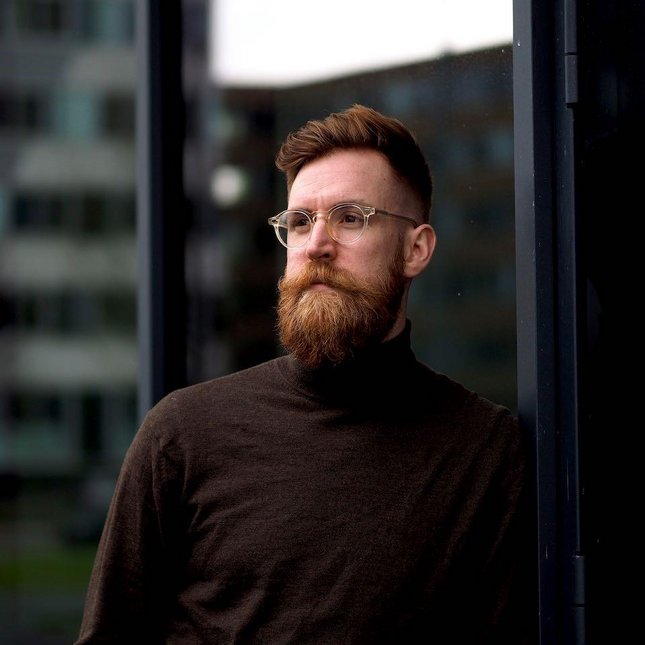Innovative research at TU/e awarded with three EU grants
The ERC starting grants will allow early-career researchers to further develop their ideas.

The European Commission has awarded three ERC starting grants of over 1.5 million euro each to three researchers at the Eindhoven University of Technology (TU/e). Ruth Cardinaels, Alberto Curto and Adrie Mackus receive the grants for their innovative research into polymer shields, nanoscale photonic devices and 3D nanostructures. The grants provide the three researchers with the opportunity to further elaborate their own ideas over the next five years. An additional ERC grant has been awarded to Bas Overvelde of the AMOLF research institute, who was recently appointed part-time associate professor at TU/e.

Ruth Cardinaels - Polymer shields against electromagnetic pollution
Ruth Cardinaels, assistant professor in the research group Polymer Technology at the Department of Mechanical Engineering, is looking at alternatives for metal casings or coatings that are currently used to limit electromagnetic pollution. With the increase in wireless devices, like smartphones and tablets, pollution from electromagnetic (EM) waves is a growing problem, leading to unwanted crosstalk and interference. Traditionally, metal is used as a shielding material. While this protects the encased device, it also sends the EM waves back into the environment, which you don’t want. In addition, there is a growing need for materials that help bend waves around obstacles, to enhance the range of next-generation 5G and 6G mobile networks.
According to Cardinaels, polymers are a viable alternative to metal. “They are light-weight, deformable, environmentally-proof and allow versatile processing. The main disadvantage of polymers is that they are transparant to EM waves. In my research, I therefore want to develop polymeric meta-materials that are able to absorb waves, and at the same time allow wave-bending around an object.”
To achieve this goal, the polymers will be enhanced by adding conductive and magnetic fillers. As this requires well-designed structures inside the material, Cardinaels wants to develop a novel additive manufacturing method. “This new method features complex multi-channel nozzles, which make it possible to create three-dimensional materials with substructures up to 100 times smaller than the dimension of the printer nozzle itself.”

Alberto Curto - nanoscale photonic devices for medical applications
With his ERC Starting Grant, Assistant Professor Alberto Curto at the Photonics and Semiconductor Nanophysics research group of the department of Applied Physics, will develop nanoscale photonic devices to enhance the interaction of light with nanomaterials. Many biological molecules come in either right- or left-handed configurations, a property known as chirality, which can affect how molecules interact with the human body. For instance, it can affect the efficacy of pharmaceuticals.
One way to alleviate this issue is to identify the handedness of molecules using circular dichroism, which measures how light of different polarizations is absorbed by the molecules. However, current circular dichroism approaches are limited by low sensitivity and low spatial resolution as a result of the weak interaction between light and the molecules of interest.
In project CHANSON, Curto is aiming to design new techniques that can accurately measure the chirality of molecules using semiconductor nanophotonics. The new techniques will aim to increase sensitivity and spatial resolution by controlling how light interacts with molecules.
Naturally, Curto is delighted with the grant award. “This funding will help me and my team to explore various light-based techniques for the measurement of molecular chirality. We hope that these techniques could be used in the future to identify the structure of protein aggregates associated with degenerative diseases such as Alzheimer’s and to monitor pharmaceuticals”, said Curto.

Adrie Mackus - 3D nanostructures for miniature electronics
Adrie Mackus focuses on the tantalizing idea the famous physicist Richard Feynman for the first time publicly proposed in his 1959 lecture There is plenty of room at the bottom: the manipulation of individual atoms and molecules. Making new materials, with atoms as building blocks, is a very promising approach to be able to continue miniaturizing electronic components.
Despite the great promise, this so-called bottom-up processing is still in its infancy, especially when it comes to the synthesis of materials in large volumes. One of the fabrication methods that is currently undergoing a lot of research is Atomic Layer Deposition (ALD). Simply put, layers of atoms are built up between a surface and a gas through alternating chemical reactions.
While this allows a very precise control on vertical growth, this is hardly the case in other (horizontal) directions. Mackus hopes to make a big step on this front (known as area-selected ALD) in this project through a unique combination of chemical (vapor-phase dosing or inhibitor molecules) and physical (exposure to directional ions from a plasma) techniques. The resulting improved understanding and approaches for fabricating 3D nanostructures could, according to Mackus, be the stepping stone to the scaling of electronics down to the single-nanometer level.
Mackus conducts his research in the Plasma and Materials Processing group within the department of Applied Physics. He studied and obtained his doctorate cum laude at TU/e. After a couple of years at Stanford University (USA), he has been working in Eindhoven again since 2016.

Bas Overvelde – using soft fluidic circuits to set soft robots free
The project of Bas Overvelde, researcher at AMOLF and recently appointed part-time associate professor in the research group Dynamics and Control at the department of Mechanical Engineering, focuses on soft robotics. The use of soft materials in robots has emerged as a way to increase the adaptability of robots and their safe interaction with humans. Although soft robots will likely never achieve the precision of the more traditional ‘rigid’ robots, their inherent adaptivity pushes state-of-the-art developments towards new medical applications, such as rehabilitation and diagnostic devices, exoskeletons for gait assistance, and in vivo assist devices. However, despite exciting developments, there are still major challenges in the development of soft robots. In particular, the existing electronic control, intelligence and power of soft robots is too bulky to be embedded, and the power efficiency of soft robots is extremely low.
With the granted “FlowBot” project, Overvelde aims to ‘cut the tethers’ with external devices to increase the application perspective of soft robots. To reach this goal he will replace the electronics by dedicated soft fluidic circuits that will fully control and power the soft robot. He will start by embedding smart fluidic circuits containing fluidic sensors, to allow for direct feedback with the environment. Then, the fluidic circuit will be closed to allow the recycling of stored elastic energy that is currently lost after each actuation cycle. Finally, Overvelde will embed a reliable pressure source based on chemical fuel and regulated by soft fluidic circuits. Together, this research will pave the way for the first fully autonomous soft robots that are capable of operating for longer periods of time.
ERC GRANTS
The ERC’s mission is to encourage the highest quality research in Europe through competitive funding and to support frontier research across all fields, on the basis of scientific excellence. ERC grants allow Europe's brightest minds to identify new opportunities and directions in any field of research, and catalyze new and unpredictable scientific and technological discoveries. Starting Grants have yearly calls and are meant for researchers of any nationality with 2-7 years of experience since completion of their PhD.